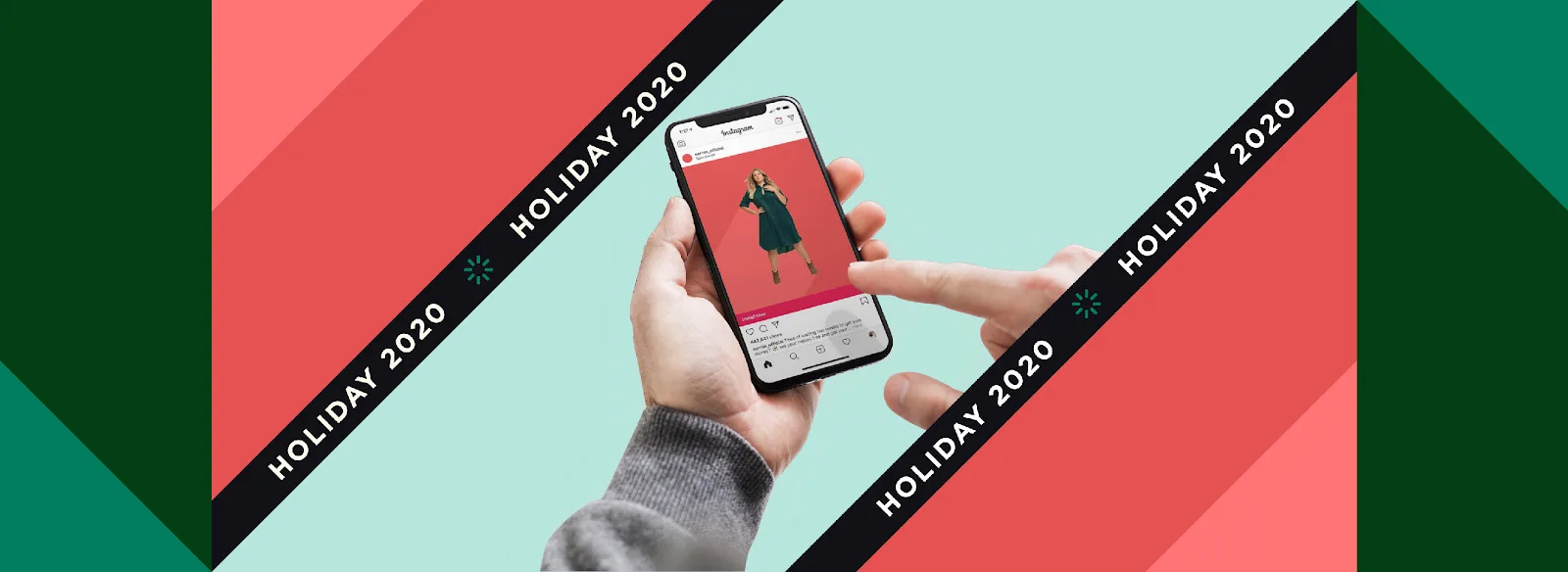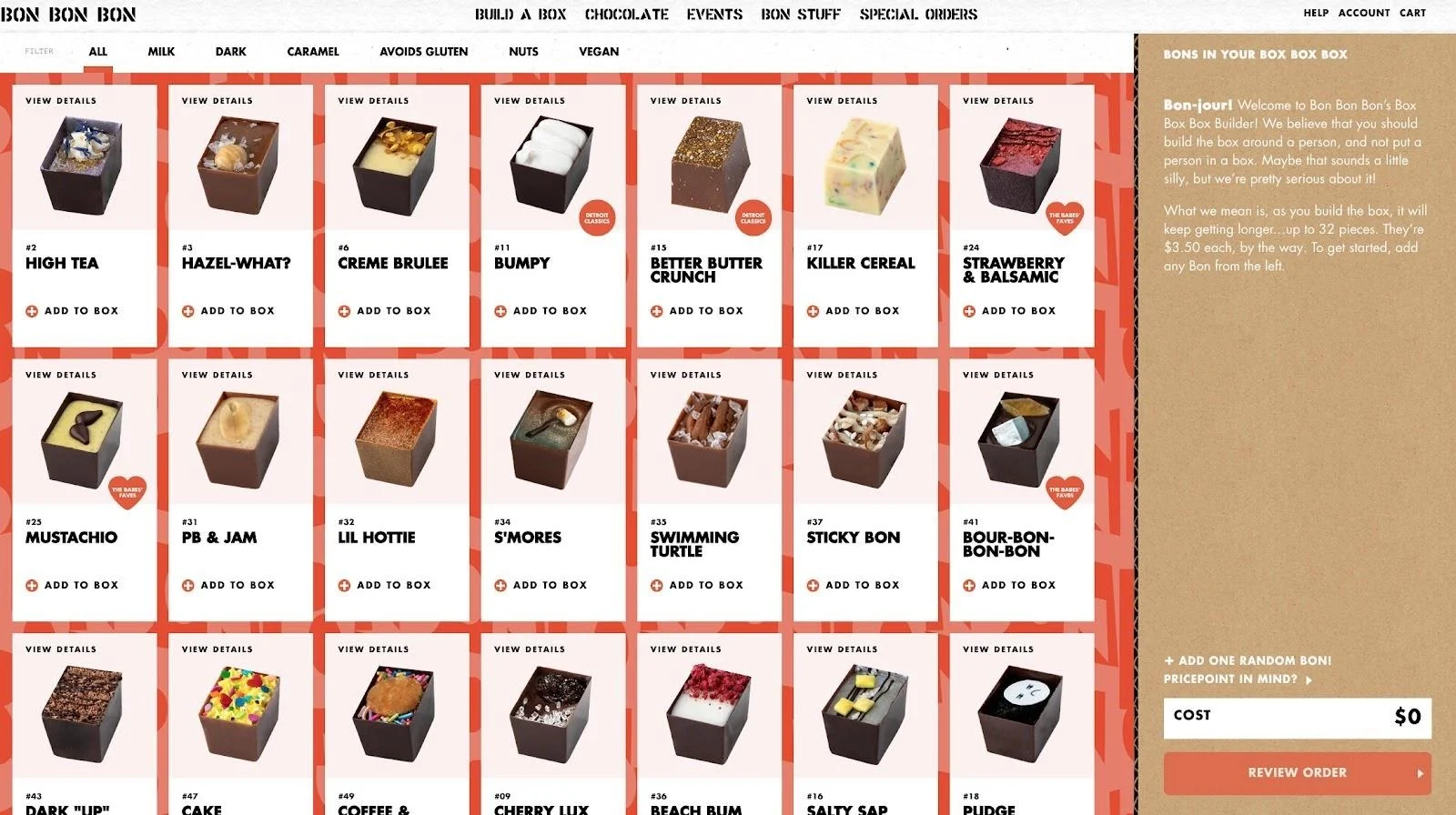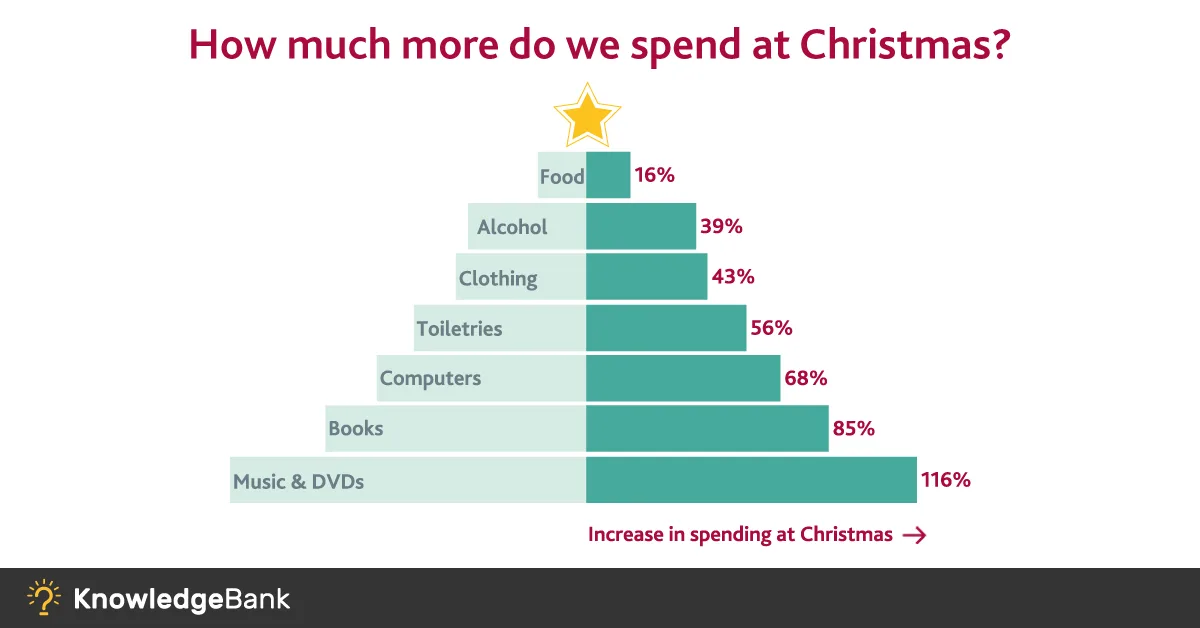2020 Holiday Predictions and Insights

It’s time to gear up for the most wonderful time of the year: the holiday shopping season. After an unexpected year of events, many retailers are looking to capitalize on the merriment of the season. This is where planning early and prioritizing online efforts come into play.
The holiday season has always benefitted brands and online shoppers alike. To little surprise, it drives some of the highest sales of the year. In 2019, U.S. online holiday sales reached $135.35 billion and average order value reached $152.95.
But, a successful holiday strategy in 2020 requires much more than an online presence. To compete during one of the busiest and most unprecedented seasons yet, brands need to create meaningful connections with consumers, offer personalized online experiences, and provide holiday shoppers with added conveniences and peace of mind.
This year, retailers face new challenges and many unknowns. Here are a few key factors to keep top of mind:
Customer behaviors have wildly shifted during the pandemic and expectations have increased
Sustainability and transparency are front-of-mind for Gen Z and Millennial shoppers who continue to rise into more purchasing power.
The ecommerce industry experienced five years of digital transformation in two months due to the global pandemic. This means immersive technology like voice shopping, AI-influenced browsing and machine learning are no longer seen as nice-to-haves, rather crucial to facilitating a great customer experience
10 Leading 2020 U.S. Holiday Season Trends
Take a peek and discover the leading 2020 U.S. trends, and see if there are any ideas you should bake into your holiday strategy.
1. Ecommerce will soar.
March 2020, the timestamp when consumers’ lives changed overnight. Ever since the pandemic made its way to the United States, ecommerce sales soared instantaneously. This was in part due to lockdown orders and temporary closures of non-essential businesses, but consumer sentiment toward the virus played a large role as well. In a report from SYKES, nearly 44% of consumers won’t feel comfortable shopping in person until they feel the pandemic is under control in the country or their area. Plus, another 25% say they won’t be shopping in person until a vaccine is available.
This brings us to the big evaluation.
Per Deloitte’s annual holiday retail forecast, ecommerce sales are predicted to grow by 25% to 35% YoY this holiday season, compared to last year’s 14.7% increase.
In a recent survey on the upcoming 2020 holiday season – we’ve already gained insight on the following consumers’ behavior:
68% say they will be starting their holiday shopping before cyber week.
79% say that they would rather be healthy than wealthy
81% agree that brands should give back during the holidays
85% want to shop to support the economy
79% would rather get shopping advice from family and friends vs. major influencers
2. Mobile and social commerce will gain popularity.
With more consumers spending time online, social commerce will play a large role in converting holiday shoppers across every stage in the funnel.
Per a recent Salesforce study, 37% of U.S. adults are more interested in mobile app shopping than last year, and 22% feel the same about social commerce.
Consider creating a mobile app experience for your store or leveraging social commerce tools like Checkout on Instagram or Facebook Shops to offer a more optimal customer experience.
3. Consumers’ new lifestyles will play into products purchased.
In a recent study done by Klarna, we learned that consumer behavior has shifted through four phases since the coronavirus pandemic:
The stock-up phase: Consumers were anxious and panicked at the start of the shelter-in-place orders.
The settle in phase: The new normal began to seep in. Consumers turned to digital activities – like Xbox – to virtually hangout with loved ones.
The let’s do something phase: Consumers begin feeling stir crazy at home and summer weather begins, which meant more outdoor activities.
The stimulus phase: As consumers received their stimulus checks, they were ready to spend a little extra cash.
As we head into the holiday season, we know consumer behavior will continue to shape what products are being purchased. Be sure to garner feedback from your customer base to better understand what they’re shopping for this holiday season.
4. Unique, experience-driven commerce will drive more conversions.
You’ve heard it before — but innovative brands are constantly trying to connect with customers both online and offline. Creating an experience around your product helps customers remember your brand and return for more purchases.
“Around the holidays, consumers are looking for a bit more “magic,” when it comes to their experience, so offering an unusual and different experience will engage an audience. Whether it’s a pop-up shop for a digitally native brand or an AR experience through a phone and a physical product, I think we’ll see some cross-over in some holiday campaigns.” — Tessa Wuertz, Director of Marketing, Efelle Creative
Before you get started creating unique experiences, you need to understand how your customers are behaving on your website. To do this, Danny Wajcman co-founder and COO at Lucky Orange encourages testing out heatmaps:
“Preparing an optimized experience for first-time visitors is more important than ever. The best way to understand first-time visitor behavior? Take a look at heatmaps, recordings and form analytics to piece together what’s actually happening during their time on your site.”
So how exactly do you create an experience in 2020?
Consider launching an experience-driven online “pop-up” — an ecommerce store where products are only available for a limited time. Here you can add new products, special offers, or holiday gift guides for last-minute shoppers. Want to take it a step further? Augment an in-person experience with immersive technology.
5. Brands will find more ways to personalize the shopper experience.
Every step in the buyer journey leading up to a transaction can be recorded and marketing efforts can be tailored depending on where a shopper ends up.
For example, using page journey tracking through a CRO tool like Optimizely or CrazyEgg, brands can see exactly where a customer’s cursor is before they abandon a page. From there, they can make recommendations — decrease page length, add a CTA, add an exit-intent popup, etc.
Now, customizations can be done at the shopper-level — as broadly or as personalized as you’d like. Different pages can show different information depending on what products a user has previously browsed, what content they’ve interacted, what they’ve seen in third-party advertisements, and more. You can also tap into Google Analytics to get more information on how your pages are performing.
“Many brands have been collecting details about purchases and people without knowing what to do with them. This year, all that information can help brands customize the experience for their customers and prospects. Way beyond inserting someone’s name in an email, expect to see more focused product/service recommendations, customized emotional appeals, and time/labor-saving offers like drop ship with personalized greetings.” — Mike Wittenstein, Founder + Managing Partner, StoryMiners
The perks of personalization have also found a way into the product experience. Online shoppers are now able to curate more thoughtful gifts via customization, a product feature that is expected to increase in popularity over the years.
“Personalizing products is a growing trend — and is a good way for a product to be special to a customer — which can drive higher engagement and AOV, compared to a race to the bottom on price.” — Keith Karlick, Principal + Head of Strategy, Mercutio
Having a fun interface that allows users to customize a product online is a clever and memorable way to delight customers.
The BonBon Builder from BonBonBon lets customers select the perfect tasty treats for a gift box.

6. Retailers will get smarter about online and offline connectivity.
Just several years ago, it was almost impossible to study a multi-touch customer journey. If a shopper interacted with your ecommerce business on social media before hopping into your brick-and-mortar store, you’d have no way to identify that touchpoint and make marketing decisions based off of it.
Now, online-to-offline tracking tools have changed that — and you bet online retailers will use that within their holiday strategies, especially now that they may be using their brick-and-mortar locations as a fulfillment center or offering curbside delivery services.
“Simply stated, online-to-offline tracking shows you who saw and/or clicked your Facebook or Instagram ad, and then made a purchase in-store. If you have the technical abilities, staffing bandwidth, and discretionary time to execute online conversion tracking in-house, it will work. Whether you do it yourself or hire a marketing partner to help, you can track and optimize your marketing spend better than ever.” — Scott Ginsberg, Head of Content, Metric Digital
In addition, options for customers to buy online, pick-up in store (BOPIS) will be table-stakes for brick-and-mortar retailers. Customers expect an easy shopping experience that saves them time and keeps them safe, so they can purchase their gifts and get back to celebrating.
For the post-holiday rush, brands will need to allow customers to buy online and return in-store (BORIS).
7. Targeted campaigns will be favored over a one-size-fits-all approach.
Once ecommerce emerged as an alternative to brick-and-mortar shopping, brands quickly attempted to reach as many customers as possible with marketing tactics like direct mail, email marketing, holiday promotions, and paid advertising.
Once budgets got leaner and customers got smarter, brands turned to using less general campaigns and more tailored approaches — and technology made that easier.
In the 2020 holiday season, expect brands to double down on tailored and target approaches to their customers through every facet of marketing.
“I hope that brands will highly segment and target their campaigns this year. The temptation is to spray and pray, but due to slim margins driven by holiday discounting, campaign ROIs are compressed, meaning you need to make every marketing dollar count!” — Jason Greenwood, Founder, Greenwood Consulting
8. Brands will need to meet higher customer service expectations.
Savvy shoppers know the ins and outs of online browsing, but sometimes they have questions — especially during the holiday season:
When will this be shipped out?
Where is my order?
Will it get here in time for the holidays?
Is there a promo code?
They expect answers to these questions quickly, and in the format they prefer: email, phone, text, social media message, or chatbot.
Having multiple forms of customer communication is pivotal for any business that expects a surge of traffic during the holidays.
Customer may have questions about holiday shipping. If you sell and ship internationally, beware of time zone differences — no one wants to wait five hours to get a response from a customer service representative who is across the globe.
On-demand chatbots help to solve this problem, according to Davd Feng, co-founder at Re:amaze.
“Chatbots and automated messaging will be the bread and butter of holiday campaigns this year. Chatbots work around the clock and can help you assist customers in finding the products they’re looking for.”
Since more stores are moving online month over month, it makes sense that digital interactions will subsidize the in-person customer service experience during the holidays.
“As brick-and-mortar stores have been replaced with online shops, customer service has been replaced with chatbots. Customer service will no longer be driven by someone behind a keyboard; questions and support will be handled by automated workflows.” — Chelsey Dewitt, Marketing Strategist, DigitlHaus Agency
9. Smart retail partnerships will help brands stand out.
One of the common dialects of marketing is that it takes more time to acquire a new customer than to get a repeat one — and the same is true for brands who work with each other to create a mutual audience.
“I think we will see brands start to find innovative ways to partner with other brands. Rising acquisition costs are going to force brands to come up with creative ways of reaching new customers through organic channels.” — Ryan Shaw, Director of Growth Marketing, Shogun
If Brand X and Brand Z both have a collection of shoppers who enjoy their products, and their products work well together (wine and chocolate, for example), then it makes sense to combine forces and co-market for the holidays.
“I think relationships and cross-promoting in others’ email lists will be big this year. If you have any relationships where you can leverage others’ customer lists and do cross-promotions, you should definitely take advantage.” — Duran Inci, CEO, Optimum7
This could mean anything from a simple email drop described above, through to a clever collaboration through a pop-up experience.
10. Brands not using video will already be behind the curve.
The rise of digitally fluent shoppers is pushing traditional outreach methods to the back-burner.
Brands are rapidly making the move to YouTube and IGTV advertising — and it’s safe to say that video advertising will become even more popular during the upcoming holiday season.
“I think videos will be a big part of this year’s holiday campaigns, and brands will also use platforms like IGTV and Instagram Live to share promotional videos. Videos are on their way to becoming the most popular content type, and they are the most engaging one as well. Marketers realize this and, therefore, you will see a lot of brands using videos for their holiday campaigns.” — Shane Barker, Founder, https://shanebarker.com/
“Video and AI are going to be used more and more throughout marketing campaigns. The ability to utilize these resources is becoming more readily available now more than ever with the advances in technology and the results are worth the investment.” — Julie Causseaux, eCommerce Strategist, Revenue River
2020 Holiday Season Trends For the UK
Holiday retail success isn’t limited to the U.S.: A typical UK household spends roughly £800 more in December compared to other months in the year.

Now, like the U.S., UK residents also faced the impacts of the global pandemic. Here’s what we can expect.
1. Steady purchase rates.
In early August 2020, online retail sales in Europe were 18% higher year over year, a sign of healthy holiday sales to come. In addition, in a “Peak to Recovery” survey done by Criteo, we learned the following on consumer sentiment for the upcoming holiday season:
84% plan to continue purchasing gifts online and sending them to recipients
52% miss going to physical stores
83% are already or will be comfortable going to shopping malls by mid-October
2. New lifestyles, new choices.
Similar to consumers in the U.S., European customers have also taken the opportunity to make lifestyle changes during the lockdown orders. In the same study from Criteo, consumers said they plan on continuing:
Spending time at home (50%)
Cooking at home (47%)
Exercising at home (35%)
Working from home (29%)
Gardening (25%)
Other categories that have seen great growth during the pandemic have included:
Consumer electronics
Health & beauty
Toys & games
Sporting goods
Furniture
Apparel
And when it comes to travel, don’t expect the previously popular choice amongst UK consumers to have as much engagement. While many consumers are looking forward to resuming their travel plans, we’ll see a slow return to travel plans. That being said, about 78% of European consumers said they would be comfortable going on weekend trips beginning in mid-October.
3. Black Friday remains popular despite the lack of Thanksgiving.
UK shoppers continue to plan on using Black Friday as an opportunity to shop online. This increases the amount of time spent browsing and purchasing online.
4. Brands will continue to discount and advertise more.
More ecommerce sales means more advertising and exciting discounts and promotions that come with it. Brick-and-mortar retailers should consider running promotions around click-and-collect or buy online, pick up in store to help increase foot traffic.
Customers expect to be delighted and prioritized, so get creative with your advertising efforts to make customers feel valued and understood.
2020 Holiday Season Trends For Australia and New Zealand
Australia and New Zealand shoppers continue to embrace growing holiday trends from the UK and U.S.
1. Cyber Week will continue to grow in popularity.
Individual shopping days like Black Friday and Cyber Monday continue to fuel holiday sales across Australia and New Zealand. Just last year, Australian beauty retailer, Frank Body, experienced 500% YoY growth after the 2019 holiday sales period. With more consumers shopping online, we can expect this to continue in 2020.
2. Local holidays will continue to grow as well.
While cyber week was the largest online shopping period for the second year running, growing 31.6% YOY in 2019, other key holidays drove major sales such as Vogue Online Shopping Night (VOSN), AfterYay Day, Boxing Day, Click Frenzy, May Mayhem and more.
3. Click Frenzy — Australia’s Cyber Monday — will remain popular.
Click Frenzy, the online marketplace holiday boasting deals like $60 airfare and $5 computer games — experienced increased clicks by an exponential 246% and the AOV was $133.85 per order in 2019. Their upcoming event on November 10, 2020 will be sure to be another success.
4. Australian shoppers are inclined to discounts.
Just like global consumers, Australian and New Zealand customers will continue to be incentivized by discounts during the holidays. A 2019 PayPal survey of 1,000 Australian shoppers found that seven out of ten shoppers actively seek out online sales or discounts, while 50% have waited until an item was on sale before buying it online.
Conclusion
Making sure you have all of your campaigns and logistics planned in advance of the holidays will prepare your brand for greater success.
Failing to get all of your ducks in a row may cause you to lose out on real game-changing revenue from holiday ecommerce sales.
By planning earlier, bringing in all stakeholders, and taking a look at these new approaches, brands can easily succeed at any holiday revenue goal.

Brett Regan is an experienced writer specializing in SaaS and ecommerce topics, with a strong focus on helping businesses navigate the digital landscape. His work covers a wide range of subjects, from ecommerce strategies to platform solutions and innovations in online retail. With years of expertise, Brett's writing provides valuable insights for businesses looking to grow and succeed in the fast-paced world of ecommerce.


